Within digital marketing, landing pages are a fundamental tool within any strategy. The way they are designed and how they work are decisive in the success (or failure) of a campaign. In order to improve conversion rate, it is essential to understand what makes an effective landing page and how it can be tailored to meet the specific needs of a target audience.
A little introduction.
A landing page is a web page designed specifically to capture the attention of users and convert them into leads or customers. Unlike other websites that have multiple objectives, a landing page has a singular purpose: to generate a specific action by the visitor, such as filling out a form, registering for an event, or making a purchase.
| The importance of landing pages lies in their ability to focus on a single goal, eliminating distractions and guiding the user towards conversion. |
Main objectives of a Landing Page.
- Lead generation: acquire valuable user information, such as their name and email, for future marketing actions.
- Increase in sales: guide the user directly towards the purchase of a product or service.
- Registration for events or webinars: facilitate user registration for specific events.
- Promoting downloadable content: Offering a free resource, such as an ebook or whitepaper, in exchange for contact information.
Essential elements of a Landing Page that generates conversions.
For a landing page to be effective, it must include certain key elements:
- Title that impacts, that attracts attention:
The title is the first element that users will see when they arrive at your page. It is essential that it be clear, novel and attractive, immediately communicating the value of the offer. The title can make the difference between a visitor staying or one leaving your site.
- Clear and precise description:
The content of the page should be concise and highly focused, clearly explaining what is being offered and why the user should be interested. It is important to highlight the benefits and use language that resonates with the target audience.
- Images and videos that challenge:
Visual elements can help capture attention and maintain user interest. Images and videos that complement the landing message can increase the conversion rate by illustrating the offer in a more attractive way.
- Call to action (CTA):
The CTA is one of the most critical elements on a landing page. It must be visible, clear, and persuasive, guiding the user towards the desired action. Using action verbs and direct language can increase the effectiveness of the CTA.
- Data collection form:
The form should be simple and request only essential information. Long or complicated forms, in most cases, discourage users, therefore, reducing the conversion rate.
Types of Landing Page according to their objective.
- Click-Through Landing Pages: they are mainly used in e-commerce, where the objective is to guide the user to a product or checkout page.
- Lead Generation Landing Pages: These pages are designed to collect user information, such as your name and email.
- Sales Pages: They focus on direct conversion, promoting the purchase of a product or service.
How does user psychology influence conversion?
Psychology plays a very important role in user behavior. When designing a landing page, it will be useful for you to consider certain psychological principles:
- Principle of reciprocity:
Principle of reciprocity
- Urgency and scarcity:
Creating a sense of urgency or scarcity (for example, time-limited offers) can prompt users to take action quickly.
- Social proof:
Showing testimonials, success stories, or the number of people who have already used the product or service generates trust and credibility.
SEO Strategies for Landing Pages
A landing page should not only be functional and look pretty, but also optimized for search engines:
- Keyword research: use relevant keywords that align with the user's search intent.
- On-Page Optimization: From meta tags to URLs, every aspect of the page must be optimized to improve its visibility in search engines.
- Loading speed: A page that loads very slowly runs a high risk of losing its visitors before they even have a chance to see its content.
With these tips, you are ready to get the results you are looking for with your website😎
If you liked it, don't forget to follow us on our social networks so you don't miss out on the latest news
